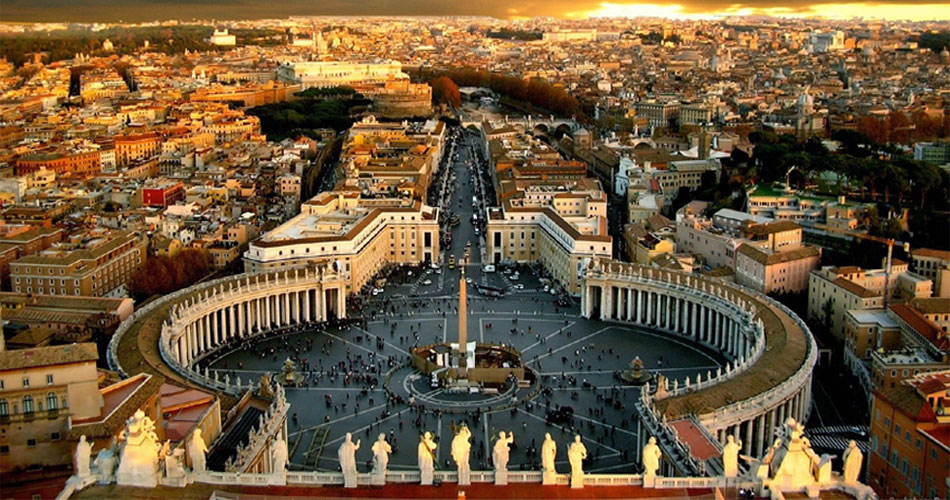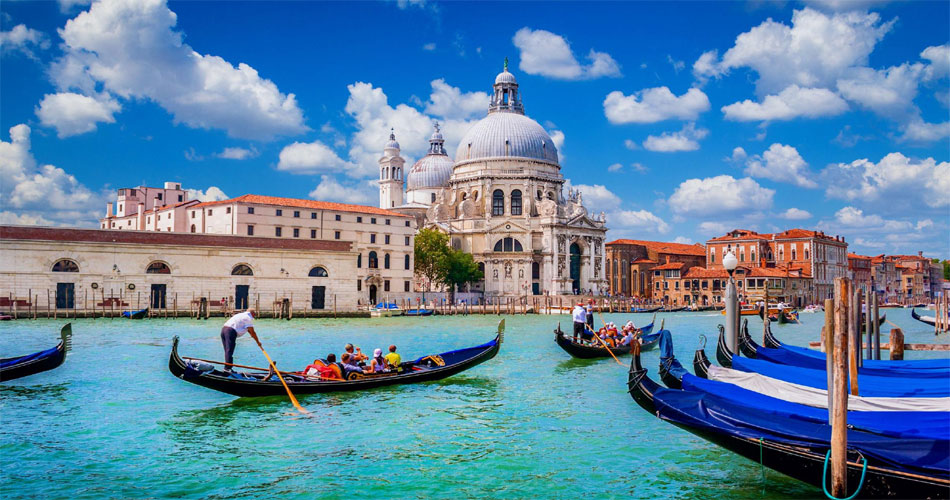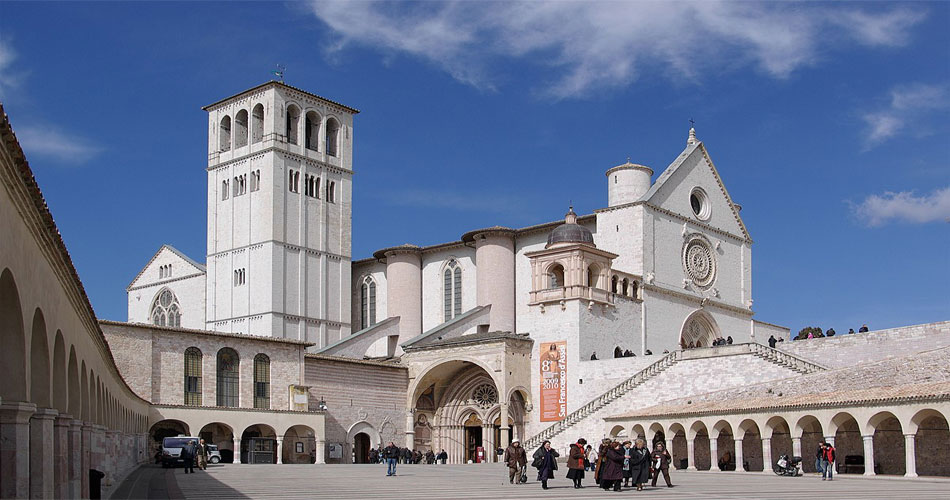St. Peter Basilica Vatican City - Rome Italy

St. Peter's Basilica is located in Vatican City, and is the universal headquarters of the Catholic Church as well as the Pope's residence. The present Basilica, built on the Constantinian Basilica, is the expression of the will of the Popes of the Renaissance who, relying on great artists such as Bramante, Michelangelo, Bernini and Maderno take us on a journey through art, faith and spirituality where we can not only admire the magnificence of the building, but also walk through its corridors, visit the chapels and enjoy the beauty of numerous works of art, such as Michelangelo's Pity (La Pietá). At the moment it is possible to visit the tombs of the Popes located in the grottos of the Vatican, and it is possible to see the tomb of Saint Peter and its successors.The entrance to the St. Peter's Basilica is free, but given the large number of visitors, it is advisable to book a guided tour to avoid the line. The options to visit are several: it is possible to book a group guided tour or a visit with an audio guide, it is also possible to combine the group visit of the Basilica to the tour of Vatican Museums and the Sistine Chapel or visit the Vatican Mosaic Studio. You can also book a private guide to visit it and combine this visit with other attractions. Finally, if you want to fully enjoy St. Peter's Square, you can visit it accompanied by a private guide who can also combine this visit with the Castel Sant'Angelo, which is not far away.

The St. Peter's Basilica is one of the largest buildings in the world and is the largest of the papal basilicas. At the moment the St. Peter's Basilica is a building that measures 218 meters of length and 136 meters of height including its dome. It has an area of 23,000 square meters. This basilica has been considered as an architectural work of great importance by the magnitude of its facade and by the quality of its work, annually receives people of diverse countries of the world who come to its interior to admire the best sculptures of the times and appreciate a work that has had centuries of construction. Did you know that a million cubic meters of soil had to be removed to complete the excavation necessary for the construction of St. Peter's Basilica? The construction of the present St. Peter's Basilica was commissioned by Pope Julius II (1503-1513), but before that, there was another basilica built by Constantine in 319. At that time the newly converted emperor put an end to the persecution of the Christians and ordered the construction of a basilica that would bear the name of the first pope. The ideal place for this construction was the great circus of Nero but Constantine ordered that the basilica was constructed in the place where Saint Peter had been buried. Did you know that Michelangelo was only 24 years old when he sculpted The Pity (La Pietá) that is inside the St. Peter's Basilica? This work is worth to be seen closely to be able to appreciate the genius of this artist with his young age. In 1972 The Pity suffered attacks and since then is protected by a crystal. Did you know that Michelangelo was the one who designed the current uniforms of the Swiss Guard that protects the St. Peter's Basilica?
Saint Mark’s Basilica Venice, Italy
A little history of the Basilica of St. Mark Originally this building was to be an extension of the Doge’s Palace, however the construction of the Basilica of St. Mark, which began in 828 and ended in 832, was made to house the body of St. Mark the Apostle brought from Alexandria to who they named protector of the city. This was a fundamental fact for Venice to be constituted as an independent episcopal seat. The works of the present basilica began in 1063 in Byzantine style to represent the power of the prosperous Venetian Republic. This basilica was built respecting the model of two basilicas of the ancient imperial city of Byzantium with a central plant in the shape of a Greek cross, with five large domes and a particular mixture of ancient and oriental art. Over time, the Basilica underwent several modifications, especially as regards of decoration, pointed Gothic arches, Sant'Alipio arch, 17th and 18th century sculptures and mosaics of the main façade, bas-reliefs that represent the professions and zodiac signs of the central gate, the marbles that come from the East, the porphyry figures of the Tetrarchs and the horses of St. Mark. The result is a stunning and beautiful blend of styles. The basilica as we know it today, even though it was modify, has a Greek cross base with five domes. It became the cathedral of the city in 1807 and has more than 4,000 square meters of mosaics, many of them belonging to the 13th century, also has 500 columns of the 3rd century.

The Basilica of St. Mark is the most important religious temple in the city of Venice. It is located in the St. Mark square (Piazza San Marco), next to the Doge’s Palace, and has always been the center of the public and religious life in the city.The Basilica is one of the most beautiful cathedrals in Europe and around the world. This basilica is the fruit of different styles, however over the years and its restructuring still preserves oriental aspects that can leave visitors astounded by their particularity and splendor. St. Mark Basilica is an intriguing combination of architectural and art styles. It is a testimony to the wealth and power of the Serene Republic of Venice as well as the reckless adventures of its inhabitants in the Mediterranean as merchants and conquerors.The Basilica of St. Mark located in the St. Mark Square (Piazza San Marco) where it is possible to visit other magnificent museums of Venice. To start, next to the basilica is the Doge’s Palace, this sumptuous building was the home of the rulers of Venice for centuries and still today is a monument to wealth and power. Here it is possible to choose between several routes but the one of the "Secret Itineraries of the Doge’s Palace" will surely surprise you. This is a tour through the political and civil history of Venice passing through the secret places of the Palace protagonist of the activities of the Serenissima. In this same square you can visit the Correr Museum, a building rebuilt at the beginning of the 19th century in an elegant neoclassical style. Here is also the Marciana Library, which is open to anyone interested in reading, studying, consulting, searching or just walking through its rooms and visiting it.
Basilica of St. Francis in Assisi, Italy
The Basilica of Saint Francis of Assisi or “Basilica di San Francesco d’Assisi” is a Papal minor basilica located in Assisi, in the Umbria region in Italy. It is one of the most important, and most visited Catholic Pilgrimage destinations in Italy. The breathtaking basilica is built into the side of a hill and includes two Churches referred to as the Upper Church and the Lower Church and the “Sacro Convento” which is the Franciscan friary. The Lower church is a crypt containing the tombs of Saint Francis, to whom the Church is dedicated. St. Francis founded the Franciscan Order and the Basilica is officially recognized as the mother church for the Roman Catholic Order of Friars. After St. Francis died in 1226, Pope Gregory IX Canonized him on July 16, 1228 and placed the foundation stone the very next day to begin construction on the Basilica. St. Francis was born in and died in Assisi. In addition to the Franciscan Order, St. Francis is also credited with founding the Order of Saint Clare, the Third Order of Saint Francis and the Custody of the Holy Land. His known for dedicating his life to imitating the life of Jesus, serving the poor, and taking a vow of poverty himself. He is the Patron Saint of Italy, animals and the environment. He is also the inspiration for our Holy Father Pope Francis, and the reason for his Papal name. He is also credited for the idea of live Nativity scenes. In 1223 his stigmata appeared after Seraphic angels came to him two years before his death.

The Basilica of Saint Francis of Assisi is the mother church of the Roman Catholic Order of Friars Minor Conventual in Assisi, a town in the Umbria region in central Italy, where Saint Francis was born and died. It is a Papal minor basilica and one of the most important places of Christian pilgrimage in Italy.The Basilica of St Francis dominates the view as you approach the city along the route. Once you’re up the hill and inside the maze of streets, you’ll find smaller chapels, monasteries and historic buildings right through the city.At the other end, the Cathedral of St Rufinus and Basilica of St Clare are also both very impressive landmarks.It was in a small sanctuary in central Italy that St Francis apparently received the stigmata – the bleeding wounds that mimic those of Jesus on the cross. This was 800 years ago and, according to Christian legend, he was the first person in history to be marked like this. St Francis kept his stigmata a secret and it was only discovered on his body after his death. By this time, the marks just confirmed to his followers that he was more than an idle prophet. When he died in 1226, he had already started a movement that was to be one of the most influential in the Catholic Church – and is still felt today.800 years on, I’m standing in that small chapel at La Verna where legend says St Francis received his marks. It’s decorated now with a stunning glazed earthenware depiction of the crucifixion. A new monastery and church have been built above it since and the number of monks has expanded. But down a short set of steps you can reach a quiet cave, tranquil with greenery and the slight dripping of water, where St Francis would sit and meditate for hours.La Verna – just a dot on the map about 80 kilometres from Florence in Tuscany – is the official start of the Way of St Francis, one of Europe’s most iconic pilgrimage trails.
Go Back To Home